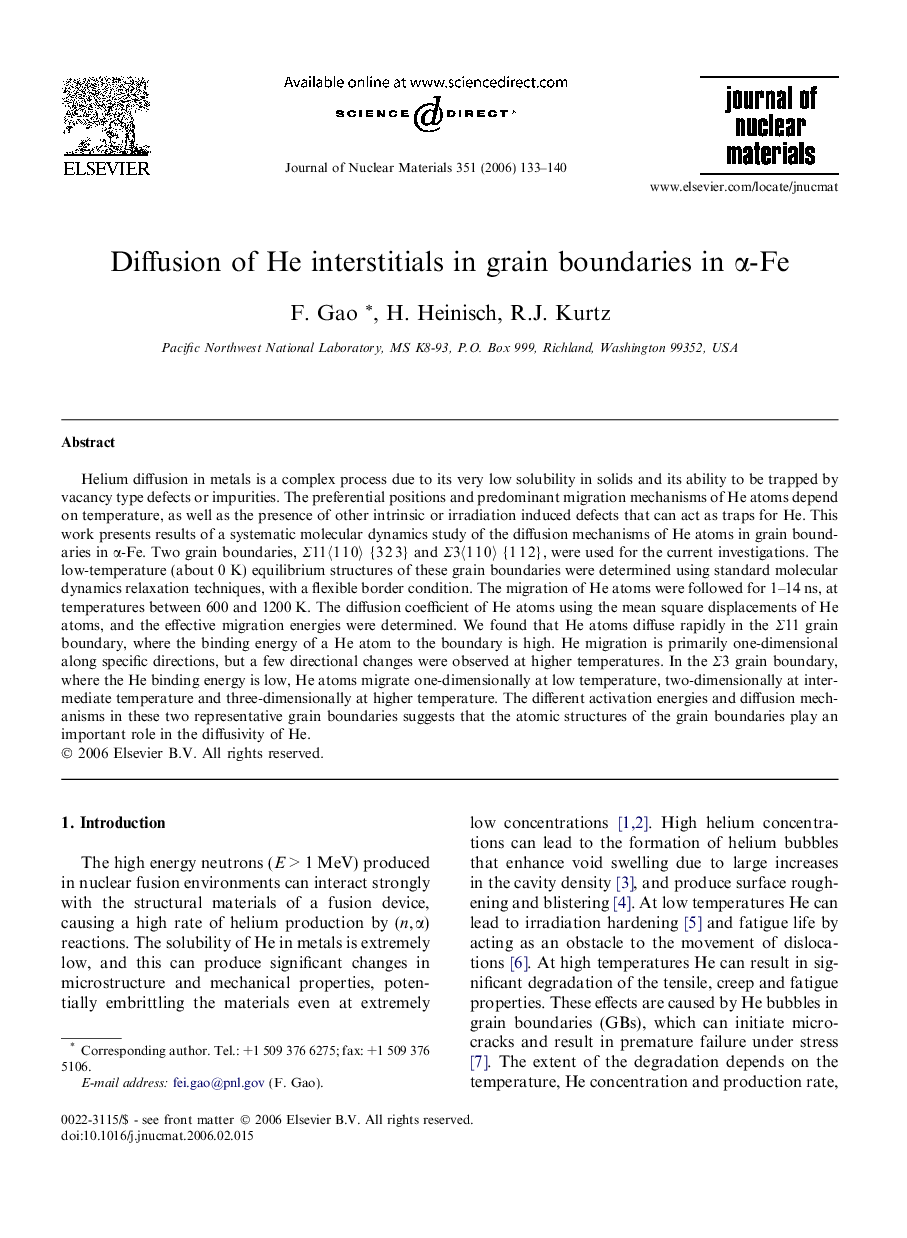| Article ID | Journal | Published Year | Pages | File Type |
|---|---|---|---|---|
| 1569867 | Journal of Nuclear Materials | 2006 | 8 Pages |
Helium diffusion in metals is a complex process due to its very low solubility in solids and its ability to be trapped by vacancy type defects or impurities. The preferential positions and predominant migration mechanisms of He atoms depend on temperature, as well as the presence of other intrinsic or irradiation induced defects that can act as traps for He. This work presents results of a systematic molecular dynamics study of the diffusion mechanisms of He atoms in grain boundaries in α-Fe. Two grain boundaries, Σ11〈1 1 0〉 {3 2 3} and Σ3〈1 1 0〉 {1 1 2}, were used for the current investigations. The low-temperature (about 0 K) equilibrium structures of these grain boundaries were determined using standard molecular dynamics relaxation techniques, with a flexible border condition. The migration of He atoms were followed for 1–14 ns, at temperatures between 600 and 1200 K. The diffusion coefficient of He atoms using the mean square displacements of He atoms, and the effective migration energies were determined. We found that He atoms diffuse rapidly in the Σ11 grain boundary, where the binding energy of a He atom to the boundary is high. He migration is primarily one-dimensional along specific directions, but a few directional changes were observed at higher temperatures. In the Σ3 grain boundary, where the He binding energy is low, He atoms migrate one-dimensionally at low temperature, two-dimensionally at intermediate temperature and three-dimensionally at higher temperature. The different activation energies and diffusion mechanisms in these two representative grain boundaries suggests that the atomic structures of the grain boundaries play an important role in the diffusivity of He.
